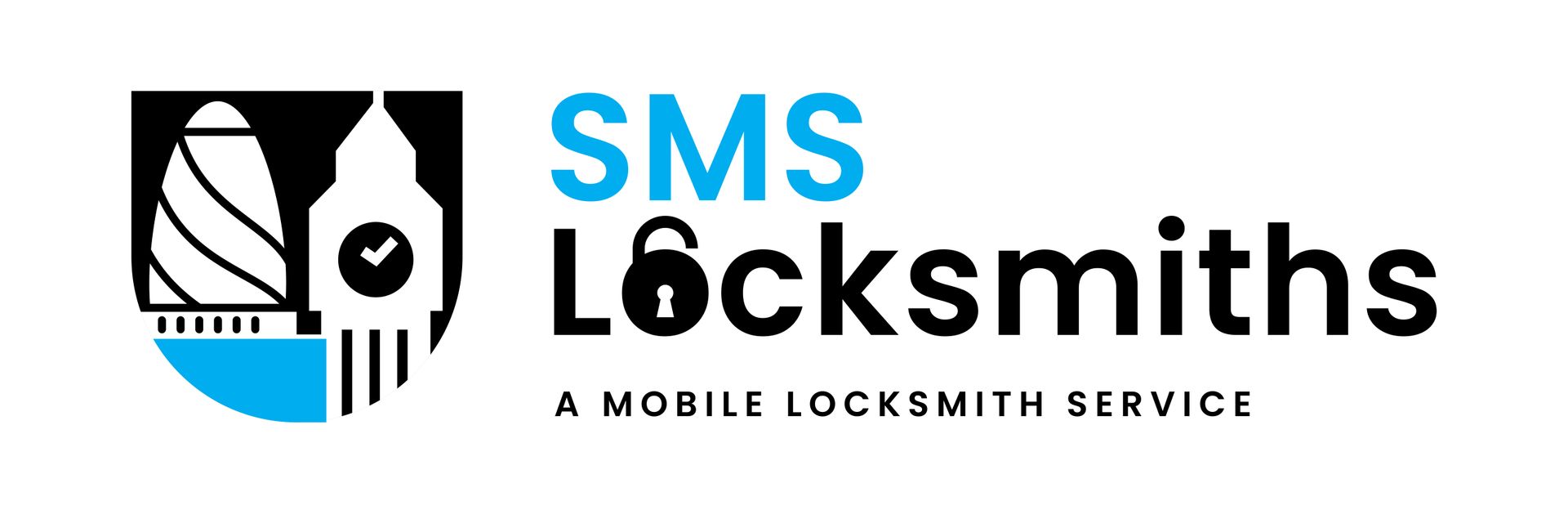Fire safety and locks
July 29, 2025
Fire safety for doors and locks
After the recent tragedy in London (Grenfell Tower) it has sadly, but finally come to the attention of Landlords, property owners and tenants alike that their properties and homes must be suitable in case of a fire.
A focal point of the "Fire safety" for us as we are locksmiths will be on the doors and locks that can be installed on a property to ensure it not only keeps in line with fire regulations but will also keep you safe, that's what they are there for. of the property.
We have scoured many .Gov websites including Council websites and Fire brigade websites to collate the information you need as a landlord of a flat or even as a homeowner with a family residing in the same house. As we are focusing on the door this calls into account all items on the door and serving the purpose of withstanding a fire and securing your residence. There are two types of fire doors equipped in different areas of the property depending on number of residents and other variants.
A fire exit door is an external door; it can be left open and does not have to be fire resistant. The purpose of the fire exit door is to allow a quick and un-hindered escape through a well lit door into a place of safety while stopping un-authorised access from the outside.
A fire door is generally an internal door, whose purpose is to
- Create/ protect an escape route though a buidling in a fire situation and
- Compartmentalise a fire, keep the flames in one area and stop smoke from spreading from one section of the property to the other. Examples of locations of fire doors include stairwells, where they protect the stairs from corridors opening on to them; kitchens/catering facilities, storage areas that house combustible materials such as paper and card and boiler rooms.
1. Easy open from inside locks.
What we consider to be one of the most important aspects of security and fire safety is that tenants/ residents can pass through with ease and without the need of a key. This is very understandable as should a fire break out in the flat/ residence and the door is locked, it's likely that the key will be left in the property somewhere thus locking everyone in a burning building with the main means of escape being locked and the key being somewhere inside the now ablaze property. Very obvious hazard risk but one that is not often noted on properties.
Should a fire break out and the main door of the property has a fire safe lock installed, it will allow all residents and tenants to easily escape the property without the need of a key. There are three main types of Fire safe locks available
- Escape mortice deadlocks - These allow escape via knob from the inside, normally installed with a thumb-turn Euro cylinder . These can be fairly cheap to install and can be matched with a number of euro cylinders varying in security thus allowing you to personalise your locks a lot more. We advise these for HMO's or properties with more than 3 unrelated occupants.
- Mortice nightlatches - Theses like the image above can be operated from the inside without a key and just by moving the handle up or down, easy escape if a fire break outs. These are normally anti slip which is great for security and most of them are secured to BS 3621 meaning they will comply with your home insurance requirements.
- Break Glass locks - These are not very common as they cannot be used on an exit used by the public or on more than 10 residents in one building or at the bottom of stairs. These locks need to have the glass replaced once broken, so again, not necessarily the most effective means of securing and fire safety.
These locks should be installed on all types of fire doors, escape should always be number one priority.
2. The door in general.
If the door is one of a few in a block flats the door needs to be a fire door. What does this mean in practical terms - this means that it needs to hold the fire inside the flat and protect the other flats for as long as possible whilst allowing the tenants/ residents to escape quickly. This may also apply to doors within the property as well, but for this blog post we're focusing on the front door of the flat. This means that the door must be a fire safe door, these can be purchased from most DIY stores and will clearly state the fire safety on the stamp, some are 30-min doors (I.e they hold the fire in for 30 mins), giving other residents in the other flats time to escape. Fire doors will be stamped with F30 or F60 thus indicating the time the door can hold the fire back from the other flats.
3. Door closers.
Door closers must be installed on all fire doors, they will close the door automatically when let go. Again the reason behind this is to make sure that the fire is sealed in a certain part of the property. If the fire is let loose and to do as it pleases it will take down a number of properties in a matter of minutes. The door closer ensures that when people leave the property in a rush, which normally happens when there is a fire, a door closer will pull the door shut behind them and seal the fire in. There are many types of door closers that can be installed on doors, even if you don't have one on the door now it can easily be installed by a locksmith nearby , thus ensuring your property is safe in case of a fire.
4. Door seals.
Ever wondered what that fluffy line, or plastic line down the side of your door does? If you have this on your door chances are it's fire safe. These are special seals that are installed in a groove down all edges of the door that expand in case of a fire ensuring that the fire is well and trully sealed inside the flat and coont spread to the rest of the buliding, geniusly simple. These can also be added onto existing doors so even if you don't have this on your door it can be done with the right locksmith and the right tools.
5. Door hardware.
Screws and hinges should be made from materials that have a higher melting point, i.e not plastic or aluminium. Acceptable materials are Iron ad steel or other high melting point metals, these ensure the door will stay on its hinges in case of a fire and again, keeping the fire in one place for a set amount of time.
These include eye viewers and all metal objects on the door. There should be minimal items on the door as the door is to function as a door, not a wall to hang pictures as these can impede the doors ability to withstand a fire.
For more information on Fire safety and the specifics required on your property check the London fire brigade website for security information check the police website and to check for your nearest locksmith who will help advise on the best security and fire safety measures for your property check for your local locksmith .

If you live in Wimbledon’s SW19, you know the vibe - gorgeous tree-lined streets, the buzz of the Wimbledon Tennis Championships, and the charm of the Village or Common just a short walk away. But between the stunning Victorian houses, sleek modern flats, and lively shops on the high street, there’s a catch: lockouts after a late night cheering at the All England Club or the odd break-in, in quieter spots can throw a wrench in your day. Even thing like moving homes or updating your home insurance can come with challenges. That’s when you need a local locksmith you can count on to sort things out fast. At SMS Locksmiths, we're proud to serve Wimbledon and the SW19 area (including Southfields, Merton Park, and Colliers Wood) with 24/7 emergency and planned services. Our DBS-checked, fully insured technicians arrive within 30 minutes, using non-destructive methods and transparent pricing - no hidden fees or call-out charges. Whether you're a homeowner securing your Edwardian semi-detached or a business owner in the Wimbledon Broadway retail hub, we're here to keep you safe. In this guide, we'll cover the top 5 locksmith services we provide to SW19 residents, tailored to local needs like upgrading heritage locks or handling post-match rush lockouts. Read on for practical tips, and remember: prevention is key to peace of mind. 1. Emergency Lock Opening: Back Inside in Minutes, No Damage to basic locks Nothing disrupts a Wimbledon evening stroll like realising you're locked out - keys forgotten after a coffee at Gail's or a tennis viewing party. Our lock opening service gets you back in fast using advanced pick-and-decode tools, bypassing tools and years of skill and experience, avoiding costly door damage. • Why Wimbledon residents love it: SW19's mix of old sash windows and modern uPVC doors means quick, non-destructive entry is essential. We handle everything from front doors to sheds and post boxes without a trace. • Real-life example: A local family in Southfields called us at 10 PM after misplacing keys during a dog walk on the Common. We arrived in 25 minutes, opened the lock in under 10, and advised on a spare key safe. • Pro tip: Always keep a copy of your keys with a family member or a person you trust, but call us immediately for lockouts - DIY attempts often lead to bigger bills. No matter the time, our 24/7 team ensures you're not stranded. Customer review: "SMS saved our night - professional and stress-free!" – Wimbledon Village resident (5 stars on Trustpilot). 2. Lock Changing: Fresh Security for New Starts in SW19 Moving into a charming Wimbledon flat or after losing keys? A lock change is your first line of defence against unknown access. We replace old locks with high-quality, British Standard (BS3621) compliant options that meet insurance requirements. • Tailored for Wimbledon: Many SW19 homes have outdated rim locks on period properties; we swap them for secure euro cylinders or deadbolts that fit seamlessly. • The process: On-site assessment (free quote), removal of old locks, installation (under 45 minutes), and a full test. Costs start from £110, with a 1-year warranty. • Local insight: With rising lettings in Merton Park, tenants often request changes post-move—we've helped dozens secure their new homes and flats without voiding deposits. Don't risk spare keys circulating; a quick change brings instant security. Book via our site for same-day service. 3. Lock Upgrades: Boost Protection Against Wimbledon Burglary Trends SW19 saw a spike in bike thefts and shed break-ins last year, per Merton Council reports. Our lock upgrades modernise your setup with anti-snap, anti-drill cylinders and multi-point systems, deterring thieves in high-traffic areas like Haydons Road. • SW19-specific benefits: Upgrade Victorian night latches to snap-resistant models or add 5 lever British standard deadlocks for Colliers Wood flats – we supply multiple brands for you to choose from on site. • Why upgrade now?: Standard locks fail 70% of tested break-ins; our BS-approved options slash that risk and keep premiums low. • Quick win: A Wimbledon Broadway shop owner upgraded their rear door after a near-miss; no incidents since, and they saved on insurance. We offer free security audits to spot weak points - perfect for families near the tennis grounds during tournament season. 4. New Lock Installations: Seamless Fits for Home or Business Renovating your Wimbledon townhouse or fitting out a new office near Plough Lane? Our lock installation service handles everything from single deadbolts to full master key systems for multi-unit properties. • Local expertise: We specialise in SW19's diverse builds -reinforced locks for ground-floor flats or heavy-duty ones for garage conversions in quiet Merton Park cul-de-sacs. • Step-by-step: Site visit for measurements, custom sourcing (e.g., thumb-turn cylinders for easy exit), professional fitting, and handover with keys and instructions. Most jobs completed in the first visit. • Business perk: For Wimbledon shops and cafes, we install mechanical digital access control for staff shifts, reducing downtime. Invest in lasting quality - our installations come with lifetime advice and no-fuss guarantees. 5. After-Burglary Services: Restore and Reinforce in SW19 A break-in is every homeowner's nightmare, and Wimbledon's green spaces can attract opportunists. Our after-burglary response includes immediate boarding-up, full lock replacements, and forensic-safe repairs to get you secure overnight. • Comprehensive support: We coordinate with police (providing reference numbers for claims), replace damaged frames, board up broken doors and windows to restore security providing you with peace of mind and giving you time to change doors. • Wimbledon focus: In areas like Southfields, where gardens back onto commons, we add perimeter advice like gravel paths for noise alerts. • From the frontlines: After a recent Merton burglary wave, we helped a family in SW19 board up, reinstall high-security locks, and claim via photos - back to normal in 24 hours. Act fast: Delaying repairs invites further risk. We're your second call after the police post-incident, with compassionate, efficient service. Why Choose SMS Locksmiths for Your Wimbledon SW19 Needs? As a family-run business with over a decade in South West London, we know SW19 inside out - from the rush of match days to the serenity of the Common. Our services aren't just fixes; they're tailored solutions with free quotes, 30-minute responses, and eco-friendly practices (we recycle old locks!). Plus, we're fully insured and DBS-vetted for your peace of mind. Ready to secure your Wimbledon home or business? Visit smslocksmith.co.uk to book online or request a free security check. For emergencies, we're just a click away - no postcode too far in SW19! Stay safe, Wimbledon - SMS Locksmiths has your back. #WimbledonLocksmith #SW19Security #EmergencyLocksmith #LockChangeWimbledon #MertonLocksmith ________________________________________ FAQs for SW19 Residents: Q: How quickly can you arrive in Wimbledon? A: Typically 20-30 minutes, 24/7 - no exceptions for rush hour on the A3! Q: Are your services insured for SW19 properties? A: Yes, all work is given a 1 year warranty and compliant with UK standards. Q: What's the cost for a basic lock change in Wimbledon? A: From £110, with no surprises - get a quote today. For more security tips, check our blog or follow us on social for Wimbledon updates!

Below is a more detailed breakdown of each service, which you can place under “Locksmith services we provide in Hounslow”: Lock Changes & Upgrades
If you’ve just moved into a new home or want to increase your security, we can replace your locks with better, more secure models. Whether it’s euro cylinders, mortice locks, deadbolts or master key systems, we can recommend and install insurance-grade products. Lock Repair & Adjustment Locks wear out over time - maybe the key sticks or you force it to turn. We diagnose whether parts can be repaired (springs, levers, cylinders) or whether it requires replacement. We can also realign misaligned mechanisms so things work smoothly again. Emergency Lockout / Non-Destructive Entry Locked out at an inconvenient hour? We specialize in non-destructive entry, meaning we’ll open your door without breaking it. We carry a full set of specialised tools, from lock picks to tensioners, to gain entry safely and professionally. Burglary & Forced Entry Repair If your property has been broken into, we can repair or replace damaged locks, door frames, or hinges. We can also strengthen weak points and offer recommendations to prevent future incidents (e.g. reinforced strike plates, heavy-duty cylinders). Door & Frame Carpentry / Refurbishment Sometimes the door frame, jamb or door edge is also damaged or poorly aligned. We can carry out carpentry, reinforce the frame, repair door edges, or adjust the door fitting so your locks work properly. UPVC / Multi-Point Door & Window Mechanisms UPVC doors and windows often have multipoint locking systems that require delicate handling. We service, repair, or replace gearboxes, locking rods, handles, and cylinders. We can also realign or replace stuck mechanisms so your windows and doors seal properly. Commercial & Business Services For offices, shops, and commercial premises, we offer: Master key systems Restricted key zones Keyholding & emergency access Panic bars, exit devices, and high-security door furniture Mechanical Digital keypad / access control installations Lock re-keying when staff changeover occurs Area Coverage & Availability We cover the TW3 area and nearby zones in Hounslow, including Feltham, Heston, Cranford, and West Drayton. Wherever you are in Hounslow, we strive to reach you fast. We operate 24/7, every day. Even during weekends and bank holidays, we remain on call.



